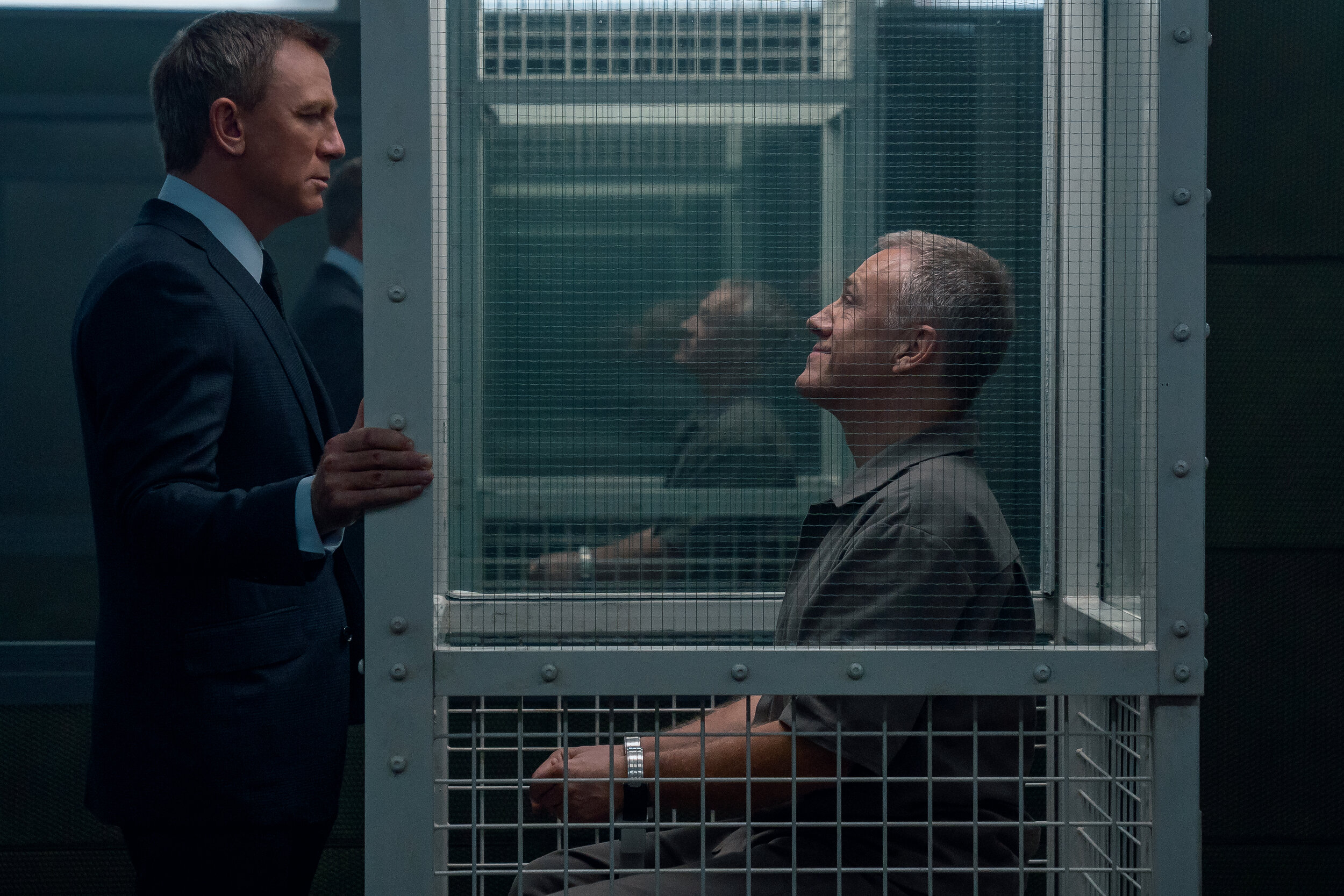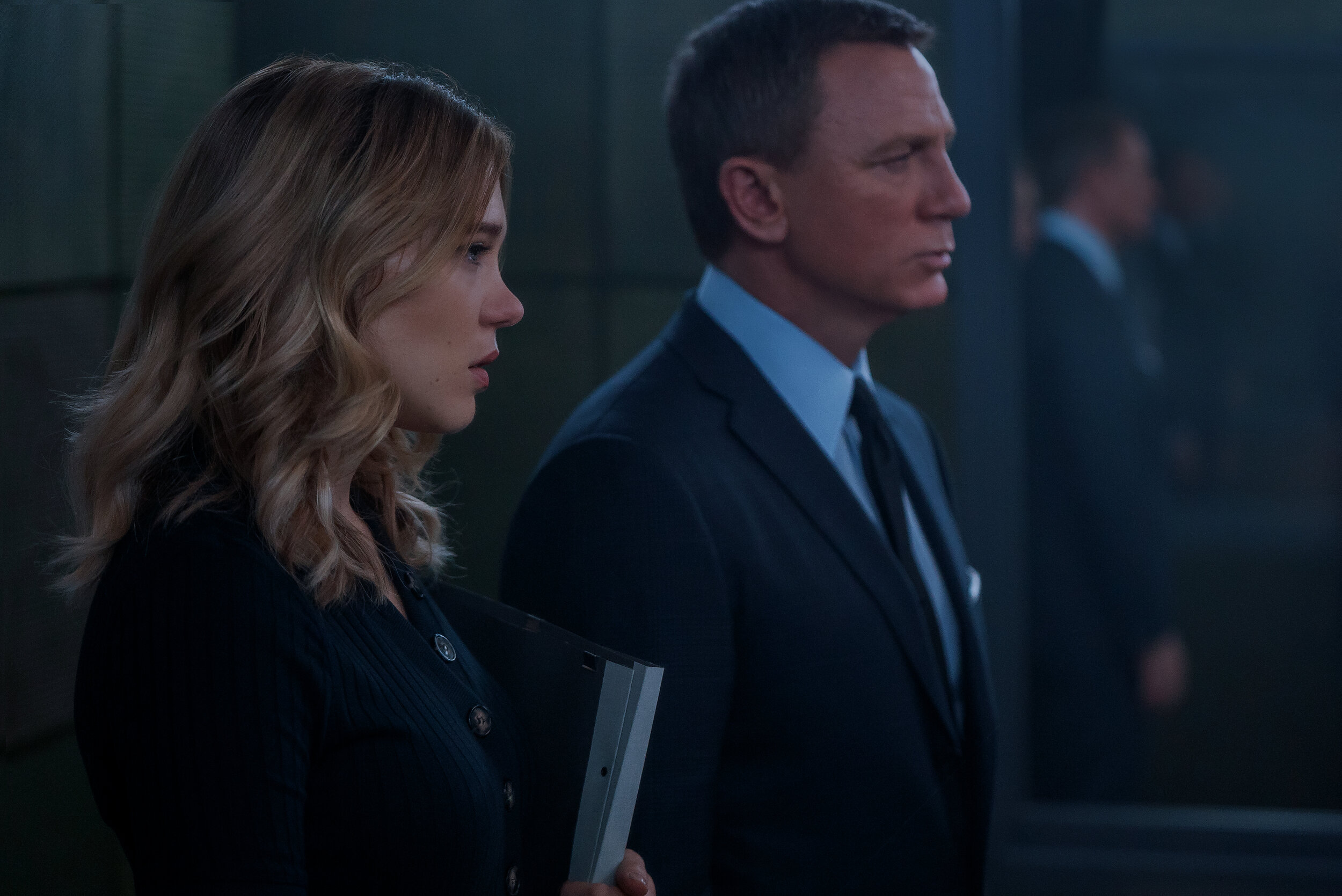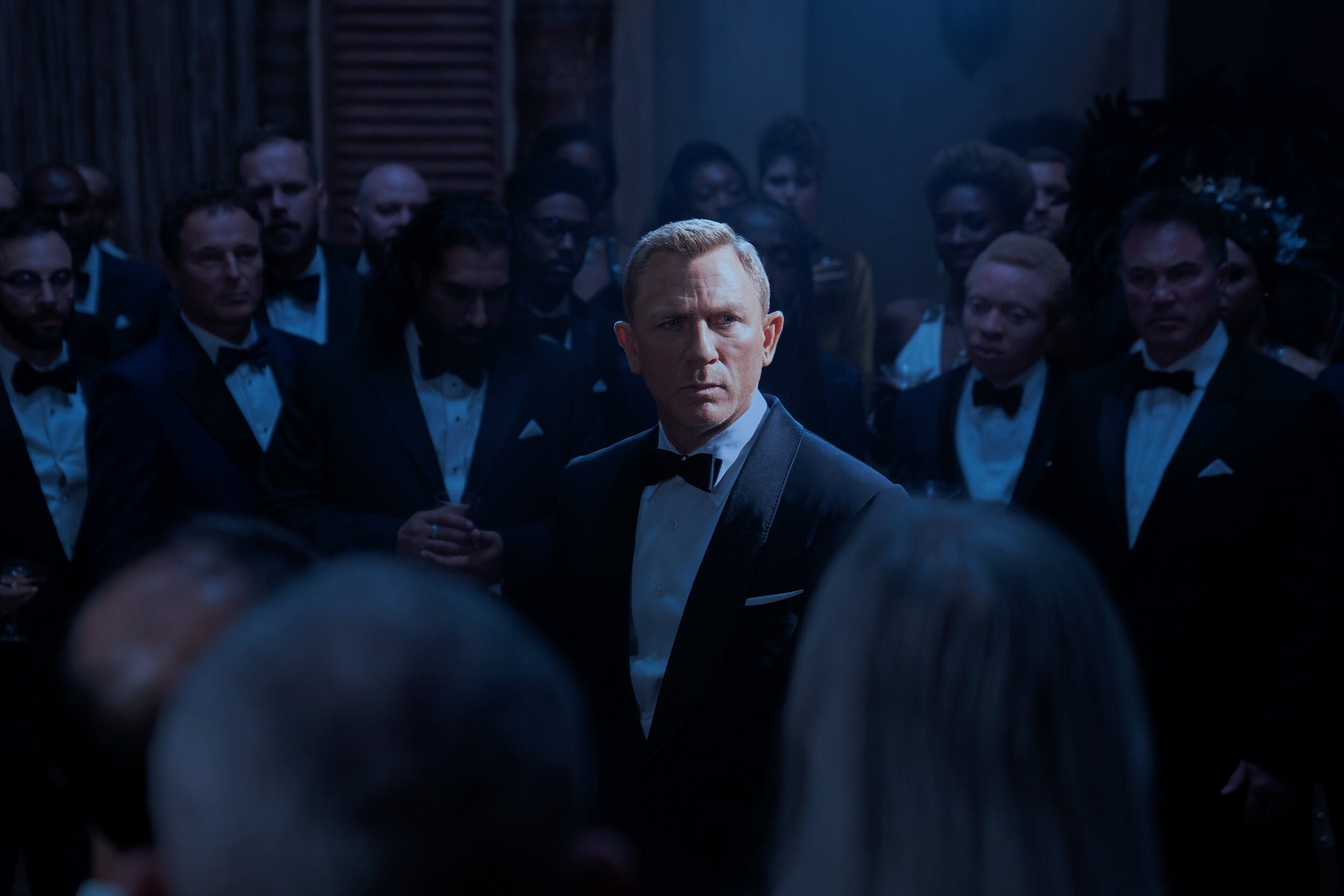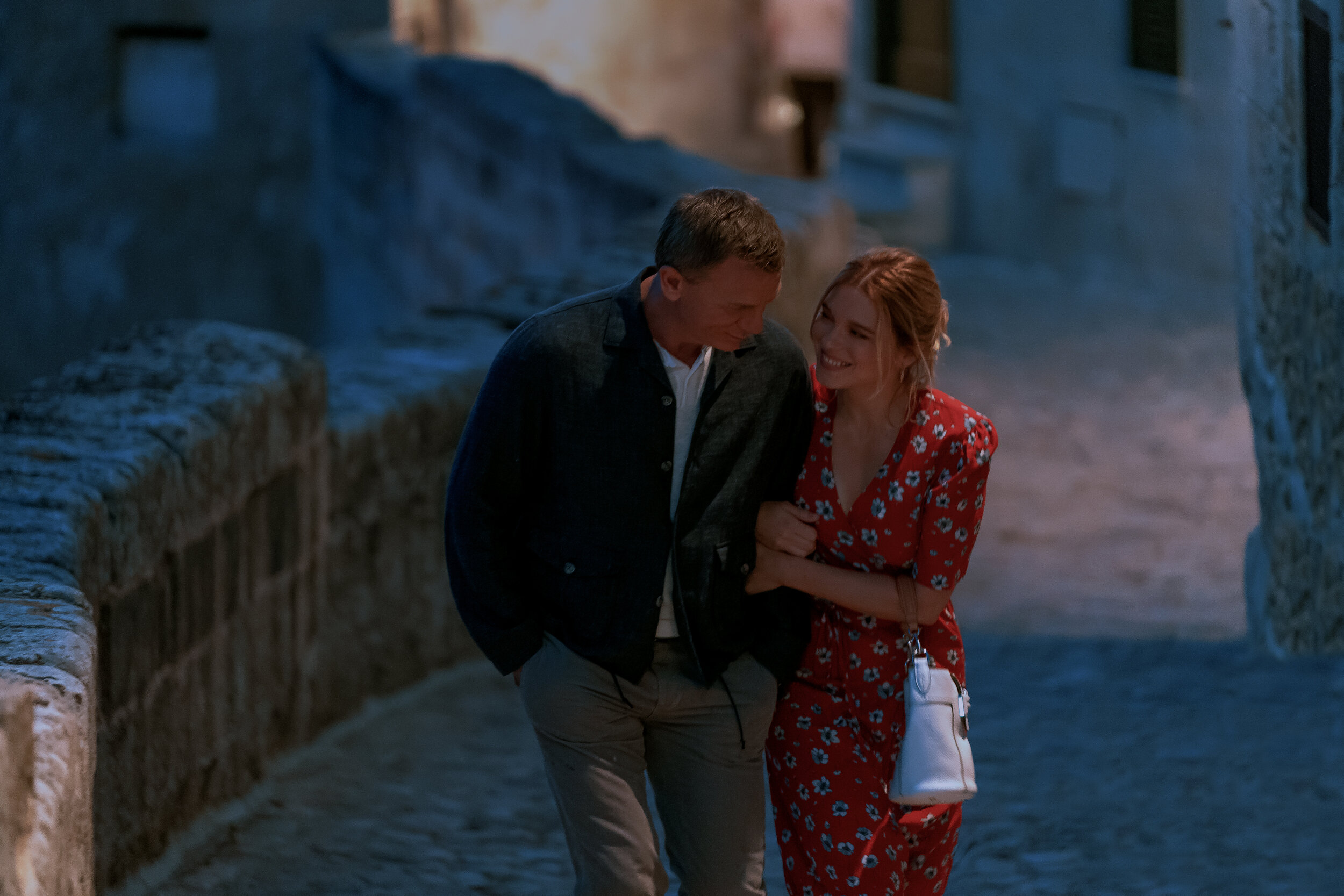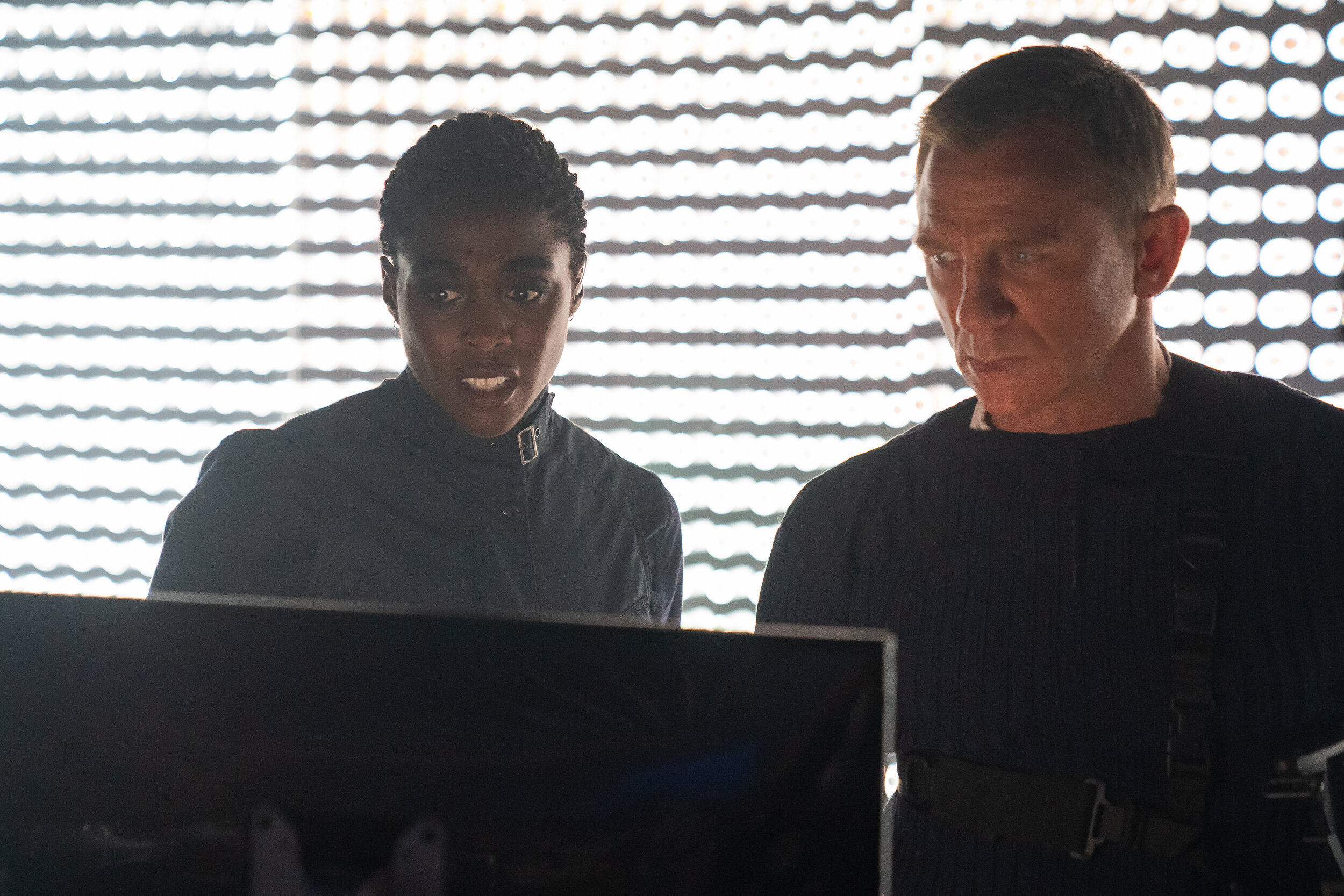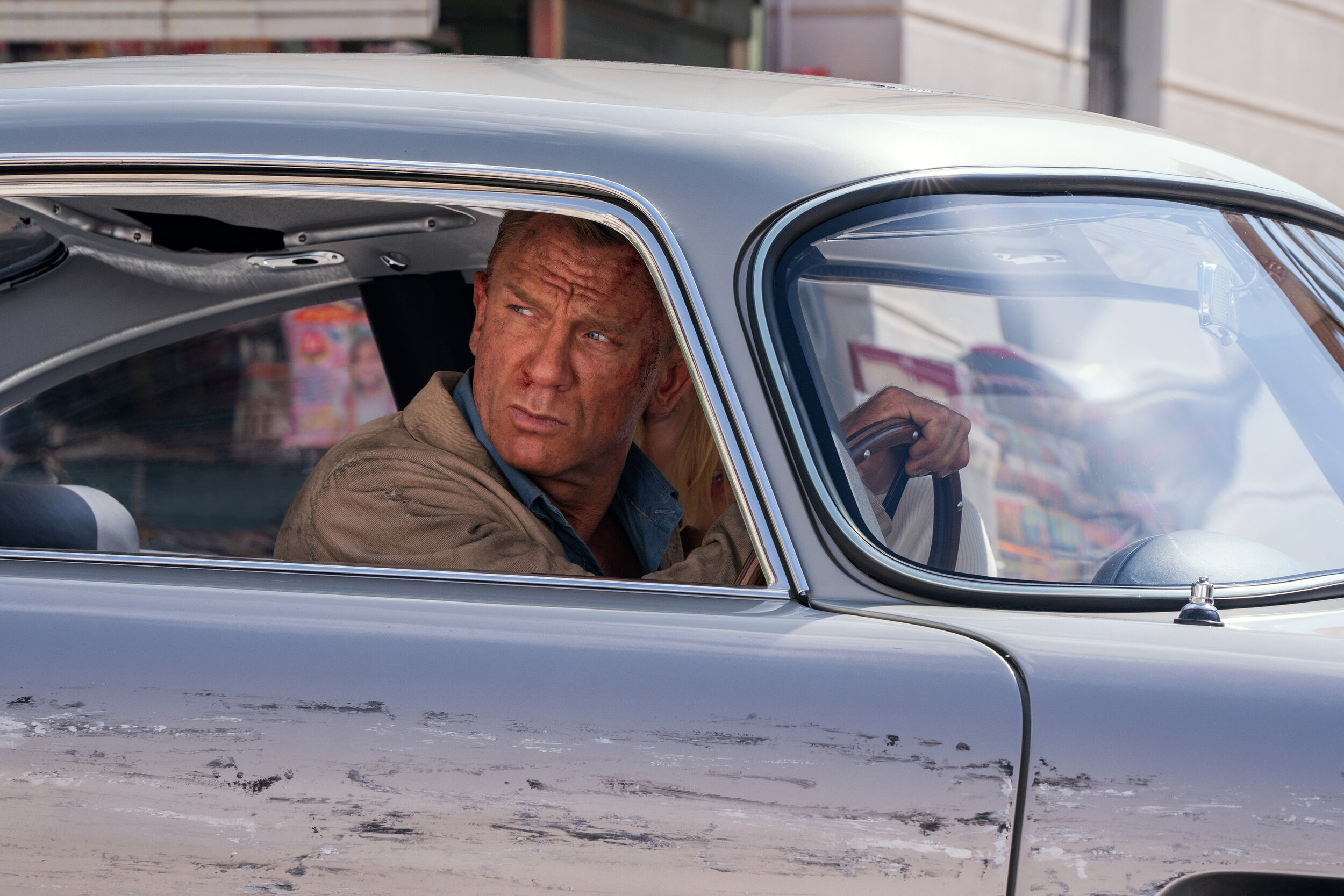MOVIE REVIEW: No Time to Die
NO TIME TO DIE-- 4 STARS
The perilous path that was started in Casino Royale has brought us to Daniel Craig’s swan song of No Time to Die. Standing here at his run’s conclusion after 15 years, we bear witness to what has become one of the most complete and fulfilling multi-film character arcs in the history of cinema. How did writers Neal Purvis, Robert Wade, and a rotating team of screenplay polishers over the years pull off this paradigm shift from episodic to epic across five films?
LESSON #1: RECOMMITMENT TO TRUE CHARACTER-- Pushing new discipline, they realigned their creative engine to strip the rote and antiquated character’s foundation back down to its very studs. Progressive change was needed for a new era of geopolitical influences and a new leading man who favored toughness over suaveness. Cinematic dalliances that burned hot, moved with excitement, and extinguished themselves quickly were given depth that was previously rare or entirely dismissed.
LESSON #2: LEAVE THE PAST BEHIND-- No Time to Die, the 25th Bond film, is the culmination of this vital recommitment. After the events of Spectre, James Bond has essentially retired from active MI6 duty, giving up everything to run away with Madeleine Swann (Leo Seydoux) as they spend a holiday in Matera, Italy. Both are hopelessly outrunning their dark and damaged pasts where Bond is quick to question how effective that is going while Madeleine constantly looks over her shoulder. The future matters, as long as the past is settled.
Burning secrets, literally and figuratively, turns out to not be enough for these lovebirds. Billie Eilish’s knockout title song separates them and fast-forwards the story five hard years. SPECTRE’s operations lingers even with the imprisoned Ernst Stavro Blofeld (Oscar winner Christoph Waltz) only to be gradually absorbed and eliminated by a new threat named Lyutsifer Safin (Oscar winner Rami Malek), who’s tied to Madeleine’s origins.
Safin has daringly confiscated a weaponized DNA-targeting nanobot virus that was part of a clandestine project overseen by MI6’s leader M (a returning Ralph Fiennes) and intends to release it over the whole planet. The international hot water has thrust a myriad of spooks from England (Ben Whishaw’s Q, Naomie Harris’s Moneypenny, and the new 007 Nomi played by Lashana Lynch) and America (Jeffrey Wright’s Felix Leiter, Billy Magnusson’s Logan Ash, and Ana de Armas’s Paloma) alike to neutralize this global danger. Even with the world on the brink, the linchpins in the middle are the unresolved conflicts and ties between Bond and Swann.
LESSON #3: LOVE OVER PLEASURE-- It’s downright ballsy to realize all of the maturation levels these new films have accomplished for a stone cold killer and anti-hero. Daniel Craig and company have made a lover AND a fighter. Craig’s incarnation of James Bond is a fighter who’s been given more than a country for his employed risks. Intimate human relationships are his true sacrifices. Evolving from Eva Green’s Vesper Lynd to Seydoux’s Madeleine, the cultivated roots and familial feels replace the old horny drive for conquests that used to smear this series. Simply put, love has been given more value than pleasure, and the investment has succeeded.
Boy, it would be easy to look at Daniel Craig, who was 50 when he shot this finale, and be very tempted to label him “long in the tooth.” Daniel’s ever-multiplying chiseled facial lines mark strong resolve and weary age. However, his dedicated dramatic performance between the punches and pistols is what has made this larger character investment triumphant. Nevertheless, give his stunt double Jean-Charles Rousseau oodles of credit for making the actor look good through the hurdles of stunts supervised by Spectre’s promoted fight choreographer Olivier Schneider and the special effects from Inception Oscar winner Chris Corbould.
Over the course of each film’s interconnected passage of time and hard experiences, invincibility gave way to vulnerability to remold the American Film Institute’s #3 hero of all-time. James Bond actually loses his fair share of scuffles and affairs. Missions fail. Carefree errors lead to life-altering consequences. Ramifications linger and last longer than a sipped cocktail or double entendre line. Best of all, none of the event-level spectacle was lost along the way. If anything, the action emphasizes the personal stakes.
Director Cary Joji Fukunaga employed Oscar-winning La La Land cinematographer Linus Sandgren to bend and capture the action from all directions. Following the last two Bond cinematographers, the illustrious Roger Deakins and Hoyte van Hoytema, Sandgren has the savvy to glide through both the wide vista specialties and the close quarters suspense, and it certainly shows on the largest scale he’s ever shot. Add in extra brawn provided by the grand composer Hans Zimmer (what a get, by the way) playing in the Bond movie sandbox for the first time in his distinguished career, and the big screen power is all there within the many lush filming locations and ornate sets designed by Mark Tildesley (The Phantom Thread).
With great amazement, Purvis and Wade were the conductors who let the James Bond franchise bloat to the gaudy saturation points that were The World is Not Enough and Die Another Day. Clocking in at robust 163 minutes, this promised climax, made with additional writing this time from director Cary Joji Fukunaga (Beasts of No Nation) and triple Emmy winner Phoebe Waller-Bridge (Fleabag), veers a bit near those former excesses. Between a few extended sidebars here and a few repetitive establishing shot tendencies there, there was honing in several places from Fukunaga that could have reduced some lag and accelerated the payoffs.
At the same time there is narrative thickness, a corresponding thinness occurs as well. Though well-cast, Rami Malek's meager villain has an alluring mystique but hangs in the rear shadows far too long and far too quietly for a film this size. Business may pick up a tick or two when he and his plan come out of their evil chrysalis, but the slow-played motivations are vague and frail for what is supposed be the apex of all menace.
LESSON #4: USE YOUR TIME-- That said, the extra minutes spent here in No Time to Die create no regrets. If anything, many will want even more as Louis Armstrong’s “We Have All the Time in the World” plays during the closing credits as an inspired and classy callback to history and old romantic themes. It’s their time to use as they see fit. Daniel Craig has earned this culmination, one that challenges the film’s very title.
LOGO DESIGNED BY MEENTS ILLUSTRATED (#992)


